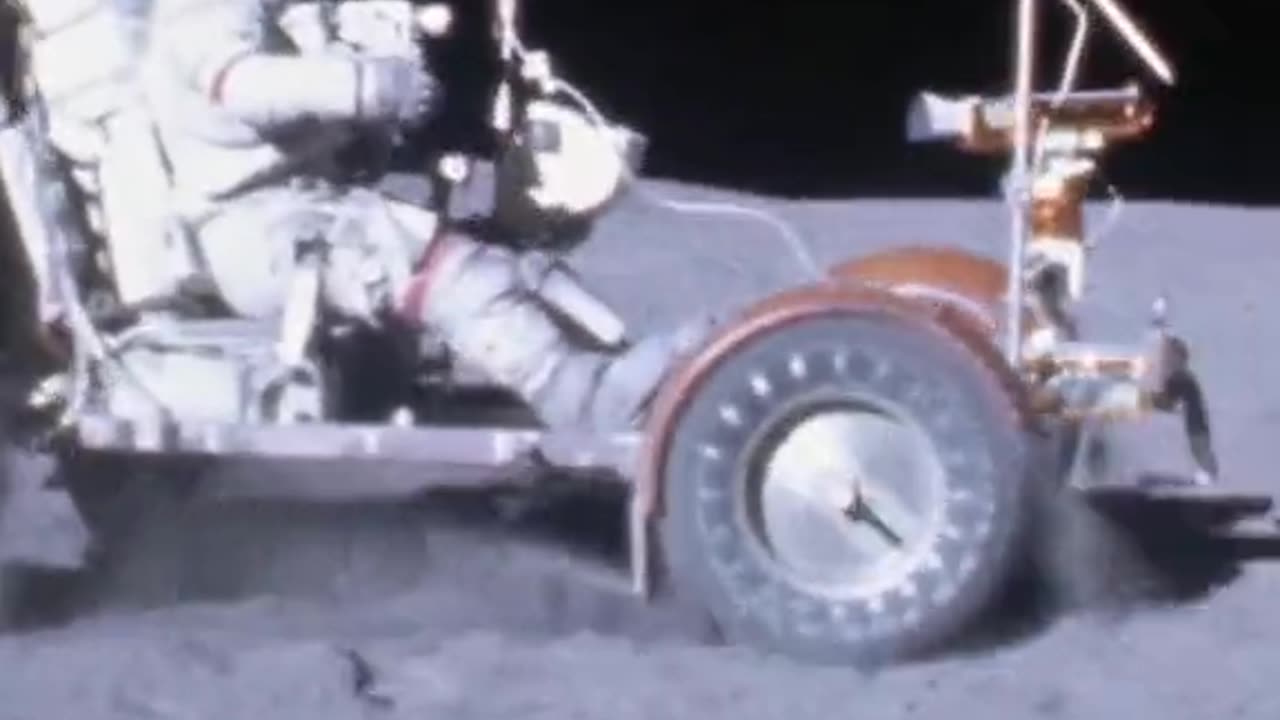Premium Only Content

Moon car apllo
The Apollo moon car, officially known as the Lunar Roving Vehicle (LRV), was a remarkable piece of engineering that played a crucial role in the Apollo missions to the moon. It was a four-wheeled, battery-powered vehicle specifically designed for the lunar surface.
The LRV was a compact and lightweight vehicle, measuring about 10 feet long and 6 feet wide. It featured a sturdy aluminum frame and four high-grip, mesh wire wheels that allowed it to easily traverse the rugged lunar terrain.
The moon car was capable of accommodating two astronauts, who would sit side by side in a small, open cockpit. They would control the vehicle using a set of handlebars, resembling those of a bicycle, which allowed for precise steering and control.
Powered by batteries, the LRV could reach a top speed of about 10 miles per hour on the moon's surface. It was equipped with a navigation system, a communications system, and scientific instruments, such as a camera and a spectrometer, to assist astronauts in their lunar exploration and experiments.
The LRV played a pivotal role in extending the exploration range of astronauts during their moonwalks. It allowed them to cover larger distances and collect valuable samples from various lunar sites. It also provided a level of mobility and flexibility that would have been impossible to achieve on foot.
The moon car's contributions to the Apollo missions were significant, enabling astronauts to conduct scientific research, collect lunar samples, and explore the moon's surface more extensively. Its deployment opened up new possibilities for lunar exploration and paved the way for future missions and technologies in space exploration.
-
 1:07:48
1:07:48
Man in America
2 hours ago🚨 Plandemic 2.0: The July 4th Bioterror Plot & Palantir’s Master Plan w/ Dr. David Martin
32.4K20 -
 1:43:07
1:43:07
Tucker Carlson
1 day agoBishop Barron on the New Pope, the Foolishness of Atheism, and Why Young Men Are Turning to Christ
197K199 -
 3:24:07
3:24:07
Barry Cunningham
6 hours agoJD Vance And Marco Rubio Speak at American Compass Fifth Anniversary Gala | And More News!
58.6K28 -
 2:52:45
2:52:45
TimcastIRL
5 hours agoTrump Admin ARRESTS Boulder Terrorists ENTIRE FAMILY, Preps Deportations | Timcast IRL
173K92 -
 2:40:48
2:40:48
RiftTV/Slightly Offensive
7 hours agoBig, Beautiful SCAM? Elon FLIPS on Trump for WASTEFUL Bill | The Rift | Guests: Ed Szall + Matt Skow
50.1K13 -
 LIVE
LIVE
SpartakusLIVE
6 hours agoSpecialist TOWER OF POWER || Duos w/ Rallied
560 watching -
 3:24
3:24
Glenn Greenwald
6 hours agoPREVIEW: Sen. Rand Paul Interview Exclusively on Locals
91.8K59 -
 3:54:13
3:54:13
VapinGamers
5 hours ago $1.47 earned⚔ 🔥 Blades of Fire - Game Review and Playthru - !game !rumbot #sponsored
35.4K5 -
 LIVE
LIVE
ZWOGs
9 hours ago🔴LIVE IN 1440p! - Max Payne 3, Halo Infinite, Marvel Rivals, Splitgate 2, & Maybe Helldivers 2 - Come Hang Out!
74 watching -
 1:14:00
1:14:00
The Daily Signal
6 hours ago🚨LIVE: Democrats Champion Illegals Amid MORE ICE Arrests
44.6K1